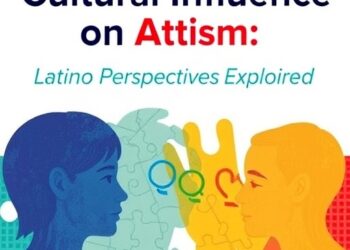Deciphering the genetic causes of common neurodevelopmental conditions like autism and common mental illnesses like bipolar disorder has been challenging – not least because of the size and complexity of the human brain – but a new package of research from a global group makes notable progress. Across Science, Science Translational Medicine, and Science Advances, more than a dozen reports from the PsychENCODE Consortium – established in 2015, and dedicated to illuminating the molecular mechanisms underlying schizophrenia, bipolar disorder, and autism spectrum disorder – lay out findings based on examining human brains at the single-cell level. “The massive collection of data from this consortium is also available for other researchers to access to continue building on the insights presented here and to help unlock more secrets of the human brain,” writes Yevgeniya Nusinovich, Senior Editor at Science, in an introduction.
Deciphering the genetic causes of common neurodevelopmental conditions like autism and common mental illnesses like bipolar disorder has been challenging – not least because of the size and complexity of the human brain – but a new package of research from a global group makes notable progress. Across Science, Science Translational Medicine, and Science Advances, more than a dozen reports from the PsychENCODE Consortium – established in 2015, and dedicated to illuminating the molecular mechanisms underlying schizophrenia, bipolar disorder, and autism spectrum disorder – lay out findings based on examining human brains at the single-cell level. “The massive collection of data from this consortium is also available for other researchers to access to continue building on the insights presented here and to help unlock more secrets of the human brain,” writes Yevgeniya Nusinovich, Senior Editor at Science, in an introduction.
Among the studies in the package, work led by Prashant Emani involving a notably large cohort and a wide range of brain phenotypes describes single-cell sequencing of the prefrontal cortex of individuals with no apparent neurological condition and patients with various neuropsychiatric and neurodegenerative disorders. The result is a detailed resource, called brainSCOPE, based on 388 individual brains, and which the authors used to evaluate links between genetic regulatory elements and brain disorders. Also in Science, Ashok Patowary lead one of the most comprehensive investigations to date of splicing and resulting isoform diversity in the developing human brain – a process with strong links to neuropsychiatric disorders. The study uncovers unique isoforms and it reports on possible links between their cell-type specific expression and neurodevelopmental diseases. In Science as well, work led by Brie Wamsley overcomes limitations in past studies of the precise biological mechanisms driving autism spectrum disorder by leveraging samples from a relatively larger set of individuals than previously studied. The resulting data “solidifies the picture of the major cortical cell types affected in ASD,” say the authors. A study in Science led by William Ruzicka generated single-cell profiles from people with and without schizophrenia to provide a deeper mechanistic understanding of the disease’s drivers. There are several other studies from Science, in the package.
In Science Translational Medicine, Yan Xia and colleagues investigated potential differences in disease burden between males and females for bipolar disorder, schizophrenia, and autism spectrum disorder, at the brain transcriptome level. The authors’ analysis of transcriptomics data from more than 2,000 postmortem brain samples revealed that those from female patients showed a higher rate of transcriptomic dysfunction, compared to males. The authors note their work adds to the growing body of research – related to the “female protective effect” – that suggests that females may require a higher genetic and environmental load to develop these psychiatric disorders. Understanding this sex-specific difference may lead to better treatments for these conditions.
In a study in Science Advances, Chloe Yap and colleagues evaluate brain cell-type shifts – which can inform disease progression – in Alzheimer’s disease, autism, and schizophrenia. Their study involved brains of 1,270 participants. Through their work, the authors found evidence of a potential causal relationship between Alzheimer’s disease and loss of endothelial cells. “These results […] direct efforts to investigate and prioritize specific cell-types as contributors to neuropsychiatric diagnoses,” say the authors.
The full list of papers in the PsychENCODE package will appear online at the following link on Science’s website on Thursday 23 May at 2pm US ET: https://www.science.org/collections/psychencode2. Early results of the PsychENCODE Consortium’s efforts published in the Science family in 2018 can be found here: https://www.science.org/collections/psychencode. Reporters may also be interested in a recent editorial from Science’s Editor-in-Chief Holden Thorp, titled “Science needs neurodiversity.”
Journal
Science
Article Title
A cell-by-cell look at neuropsychiatric diseases
Article Publication Date
24-May-2024




